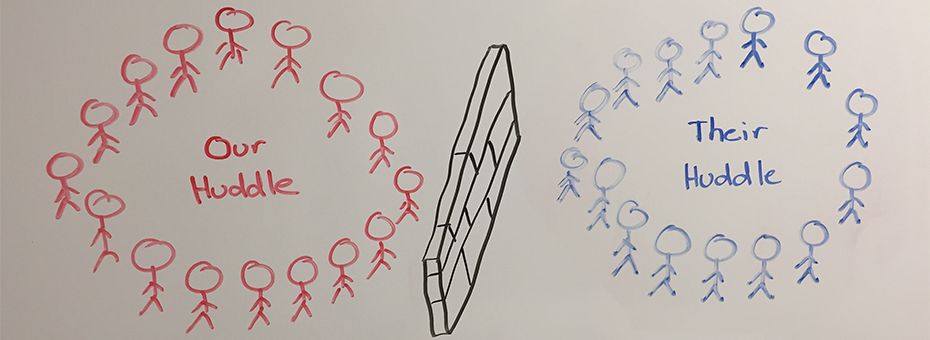Many teams huddle. This is not a new practice. For a long time the benefits of huddles have been shared and studied. Many teams do this well. Most organizations do not.
Or at least, that has been my learning through the countless discussions I’ve had with people about huddles in their organizations. Huddles are set up for groups of people to get together and discuss something. Some huddles are operational in nature – how are we going to get through today? Some huddles are improvement focused – how can we improve what we do? Some huddles are time set aside for people to simply gather.
When we implemented Tiered Daily Huddles at Cleveland Clinic we aimed to build upon an existing practice by changing a few key components. These changes helped us focus and deliver on what matters most to our organization–being the best place to receive care and the best place to work in healthcare. Specifically, we focus on patient safety and quality issues, caregiver safety issues, and providing access to care for our patients. Here is what we discovered and acted on:
- The huddles needed to be smaller – in Healthcare it’s common for hospitals to have a daily hospital-wide 15 minute “safety huddle”. While the benefits of this practice are well known, the challenge we saw is that across an entire hospital there are many more problems to be solved than can be shared in 15 minutes. By creating smaller huddles (typically 5-15 people), we create an environment where individuals are much more likely to openly discuss problems within their team than in a large group with multiple levels of leadership. Additionally these small huddles have an expectation that every attendee shares information daily; this expectation builds in responsibility and accountability for every leader.
- The huddles needed to be connected, or “tiered.” We found this to be a critical element because it created a method for people to systematically share information, escalate issues, and ask for help where needed. Tiers ensure the information flows in a logical way throughout the organization, and that problem solving occurs in all teams at all levels of the organization. Tiers provide a way for the manager to develop team members and illuminate problems that were previously trapped, remaining with those closest to the work who had no clear, consistent venue to share it.
- In order for the huddles to be connected in an effective and logical way, they needed standardization. We put into place a standard framework – including a standard way we identify and review performance inclusive of the definition of the metrics, a standard way to investigate different types of problems (not all are the same), and a standard way for the tiering to function in different locations. This standardization created shared expectations, enabled rapid dissemination and served as the basis for continual PDCA.
So when people ask me if they need tiered huddles, I respond with a few questions:
- How are problems surfaced by those closest to the work? How often does this happen? How do you know that it’s happening?
- How do your senior leaders support the daily operations? How are they made aware of the daily challenges, and how do they respond to support teams in their daily work?
- Does each leader (throughout the organization) have a good understanding of their daily performance and challenges? Do they know just the data or do they know the stories behind the data? Is the data real-time and actionable? Or pulled from a monthly summary report?
- Most importantly are these methods consistent, repeatable, and efficient throughout your organization?
These are a few of the most critical factors that we have discovered to be important with tiered daily huddles. What about you? What’s your experience?






Thank you for this article. What process is implemented to ensure the tiered huddle system is sustained ?